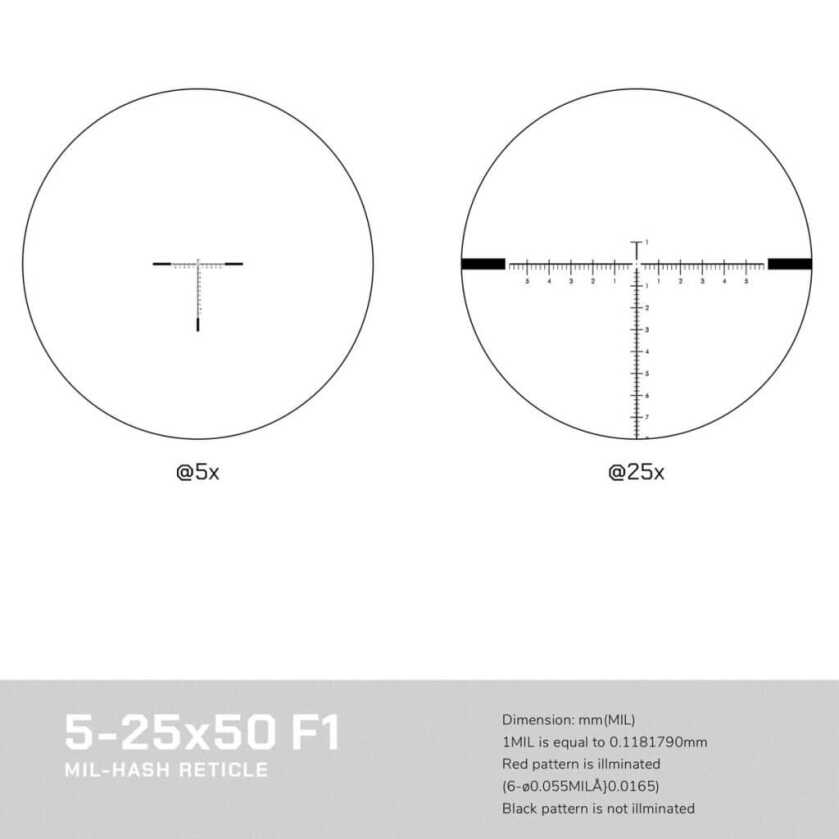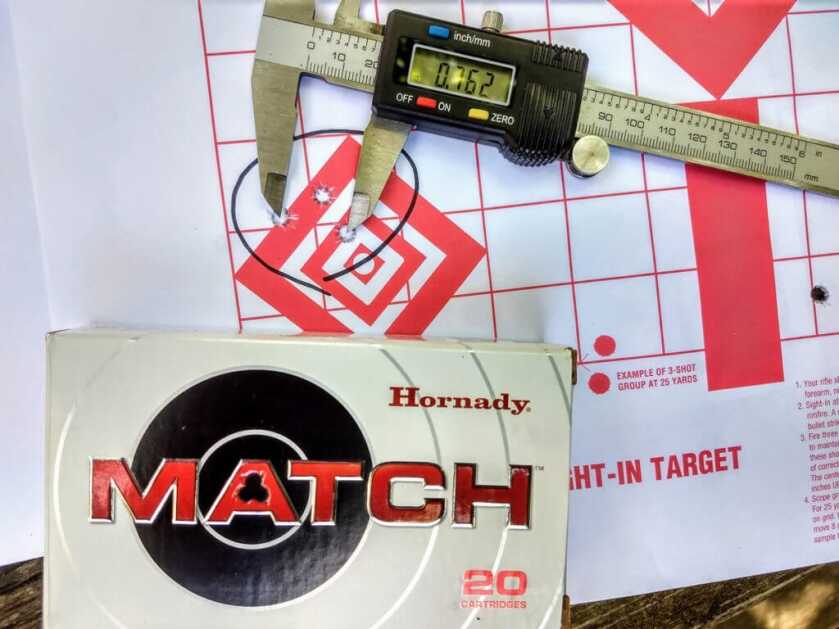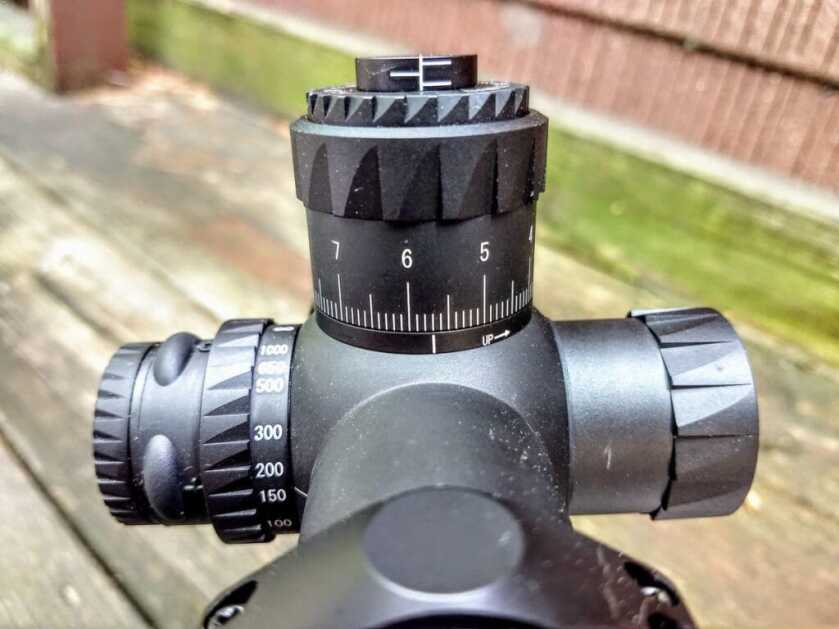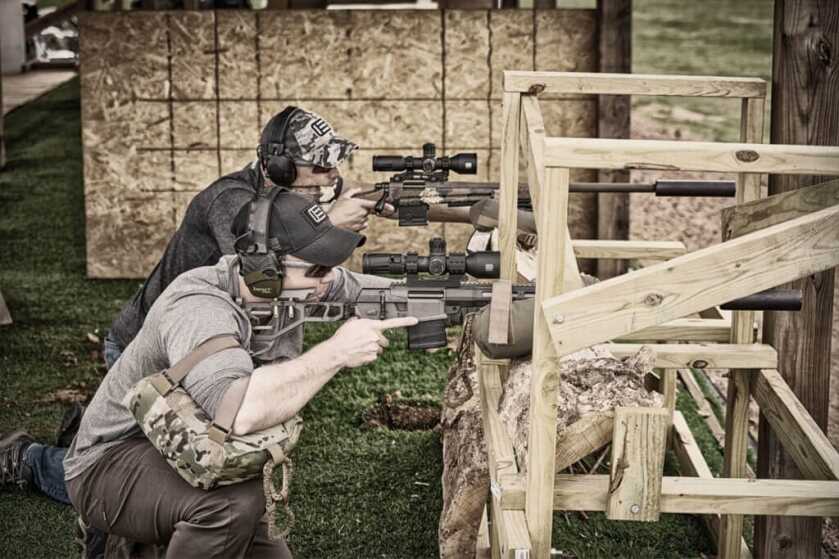Best known for its holographic sights, EOTECH jumped into the riflescope market a few years ago with the VUDU line of optics. Today, the VUDU line encompasses four models with first-focal plane (FFP) reticles and three models featuring second focal plane reticles. Magnification options from 1 to 6 all the way to 8 to 32.
I used and reviewed one of the first VUDU models to hit the stores, the 1-6x24mm FFP. It was a first-rate optic and particularly suited to AR-platform rifles. During a hunt in Mississippi, I took two white-tailed does using an AR-15 with the VUDU 1-6×24 mounted on the rifle, both with single shots at over 200 yards.

Impressed with the VUDU 1-6, I expected a good deal of interest in the whole VUDU line. But it never quite happened.
Well, the optics market is a very crowded one, especially for upper-end rifle scopes like the VUDU line. That crowding is the only reason I can think of to explain why the VUDU scopes haven’t received the kind of attention more-established scope makers have experienced the last couple years.

That’s unfortunate, because the VUDU rifle scopes are first-rate, including the newest optic in the lineup, the VUDU 5-25×50 FFP scope I recently tested. The VUDU 5-25 features very precise controls and a durable tube, gives a shooter clear images and more than enough magnification to shoot at distance. The elevation turret includes a push/pull locking system.
All this is an extremely compact scope that weighs under two pounds.
I mounted my test model VUDU 5-25×50 onto a new Remington 700 Magpul Enchanted rifle chambered in 6MM Creedmoor (review to come here at Guns America) and headed to my local range. My VUDU scope has EOTECH’s MD-3 (MRAD) reticle, but this scope is also available with an H59 Horus reticle.

At 50 yards, the VUDU and Remington 700 were on paper using Remington’s Core-Lokt 6MM Creedmoor ammunition. But the 100-grain bullets struck several inches high and to the left, so I had to adjust the Elevation and Windage the appropriate number of clicks to get the point of impact to move. But I didn’t do the changes all at once. Instead, I gave the scope ten clicks Up and five to the Right, shot, and repeated the process, and saw the bullet holes steadily move up on the paper until I was hitting the bullseye.
At 100 yards, I switched over the Hornady Match 6MM CM rounds firing a 108-grain ELD Match bullet. The ammo change required a little tinkering with the controls as the first rounds hit left and low about an inch and three-quarters of an inch, respectively.

Once I got the VUDU zeroed, I shot several three-shot groups, letting the rifle cool for five minutes between groups. My last group looked pretty tight—I later measured it at .70-inches—so it was time to see just how precise the controls were on this optic.

Usually, I do a version of “shooting the box” when testing a scope to track how the Elevation and Windage adjustments made via the scope controls translate to actual movement on the target. My version is to take a zeroed scope and rifle rig and put the first shot in the center of the bullseye at 100 yards. Then I click to the RIGHT ten or 15 clicks, and fire a round, go UP the same number or clicks, fire, go to the LEFT the same number of clicks, fire, and then DOWN the last same clicks, and fire. For every change, I keep the crosshairs on the bullseye.
With a scope that tracks well, the result should be a rough box, with Shots #1 and #5 very close to each other, as the last round of adjustments return the scope and bullet to the original zero point.
The box, though, gets a little old, so I did a change-up and decided to try a more staggered pattern.

I took a 12”x18” piece of paper and drew a small box in the bottom left corner, and set up the paper at 100 yards. My first shot was right at the box, and it hit just inside the left side of it. Then, I gave the Elevation know 10 clicks UP and—still aiming at the box–fired, then ten clicks to the LEFT, aimed at box and fired, and then did five clicks UP and five to the Left, and fired.
From my firing position, my shots appeared to move accordingly. So, I clicked ELEVATION and WINDAGE back to the original, zeroed setting and fired. That shot hit within an inch of the first shot, which I considered pretty good as I was shooting fairly fast, and the barrel was hot, the 6MM Creedmoor rounds being 3,000fps screamers.
The VUDU 5-25 is set up for MilRads, so at 100 yards 1 Mil equals 3.6 inches. But the adjustments are at 1/10th Mils. So, after shot one in the box, my 10 ten clicks UP should have equaled the bullet strike moving UP of 3.6 -inches. Mine measured 3.7-inches.
Likewise, the next ten clicks to the RIGHT for Shot #3 should have moved over the bullet strike another 3.6 inches. Mine shifted 3.8-inches.
The 5 clicks UP and 5 clicks to the LEFT should have moved my next shot LEFT 1.5 inches and UP 1.5 Inches. Mine? UP 1.7 inches and over to the LEFT 1.4 inches.
Any way you look at it, that is some precision tracking for the VUDU 5-25 scope. SHOT #5 should have been closer to the Shot #1, but being an inch off was clearly more because of me the shooter and the hot rifle barrel than the VUDU.
Images seen through the VUDU 5-25 were very clear and sharp-edged. Colors and color changes were distinct—no blurring from red bullseye to white paper or from the dark tree trunks and the green, leafy branches I lined up at 300 yards.
I also took out the scope at dusk. The VUDU 5-25 grabbed up enough light that, had I needed to, I could’ve made a clean, ethical shot on deer-sized game out to 300 yards without a problem at dusk and a good 10-plus-minutes beyond. (Younger eyes, no doubt, could extend that range.)

The parallax control on the VUDU 5-25 adjusts from 50 yards to Infinity and is easily set thanks to a nicely knurled knob. The reticle on the scope is illuminated, operates by a push-button on the far-left knob, and runs on one CR 2032 battery. The 34mm tube is constructed from a single piece of aircraft-grade aluminum that should provide years of use even in tough conditions.

The New Vudu 5-25 x 50 mm is ideal for shorter platform rifles. At approximately 11.2 inches in length, the 5-25x is one of the shortest first focal plane rifle scopes on the market.
This is a pricey scope, carrying a suggested retail of $2,100.00. The least expensive I found it online for was $1,500 from a company I am unfamiliar with called Optics Agent. Other sites offered the scope for anywhere from $1680.00 to full MSRP.

That’s a good deal of cash. But the VUDU 5-25×50 isn’t the scope needed to take down a deer at 125 yards. It’s a precision, high-tech combination of glass and metal meant to go long, in a surprisingly compact design. All this functionality doesn’t come cheap.
SPECS: EOTECH Vudu 5-25×50 Rifle Scope
Magnification: 5 to 25
Objective Lens Diameter: 50 mm
Tube Diameter: 34 mm
Reticle Focal Plane: First Focal Plane
Illumination: Red LED
Battery Type: CR2032
Eye Relief: Approx. 3.6”
Adjustment Type: Mil Rad
Adjustment Click Value: 0.1 Mil Rad
Adjustment Range: 80 MRAD Windage, 100 MRAD Elevation
Field of View: 23.3 – 4.7 ft at 100 yds
Lens Material: AR-Coated XC High-Density Glass
Waterproof: to 1 Meter
Length: 11.2 in
Weight: 29.5 oz
Finish: Black Matte
Additional Features: One-piece aluminum construction; Nitrogen filled; EZ Chek Tactical Turrets for a quick return to zero; Sunshade included.
MSRP: $2,099.00
